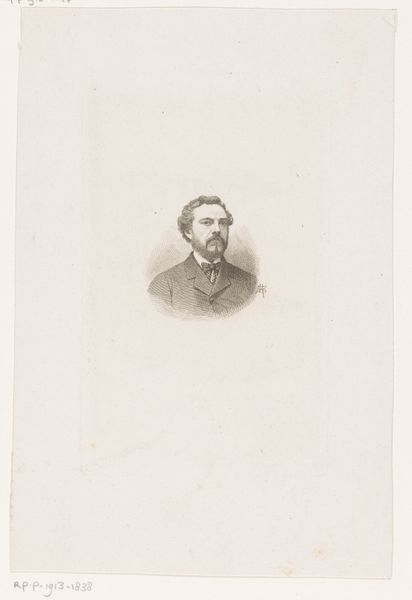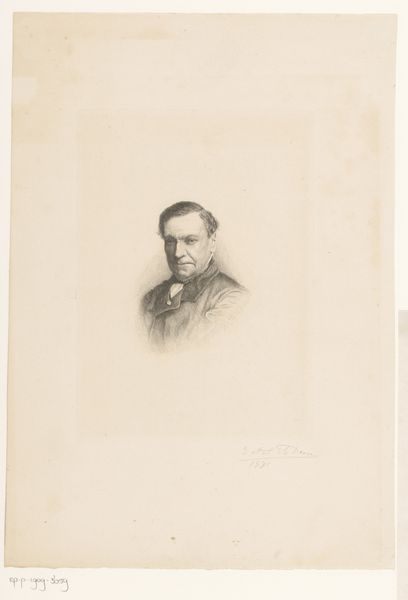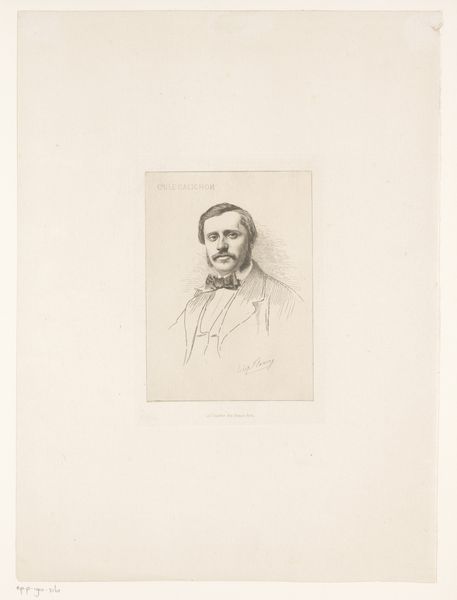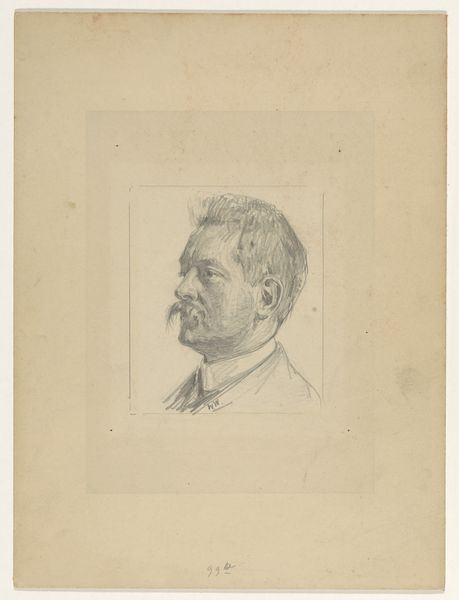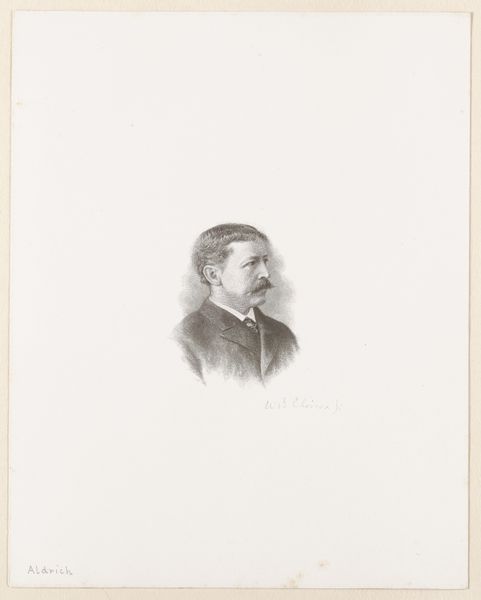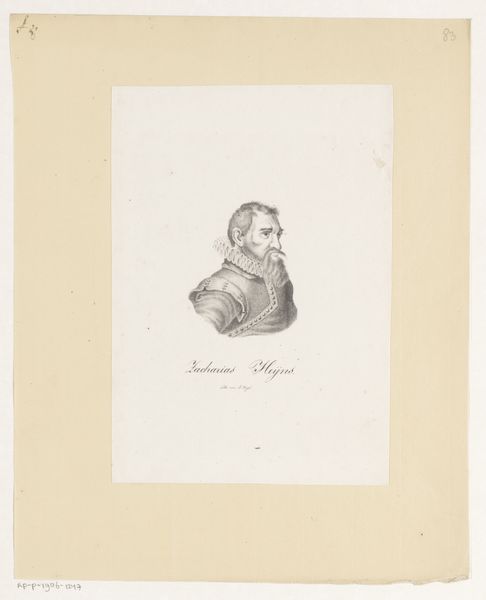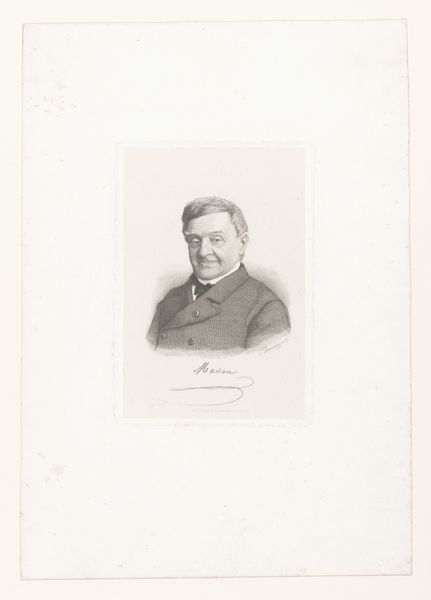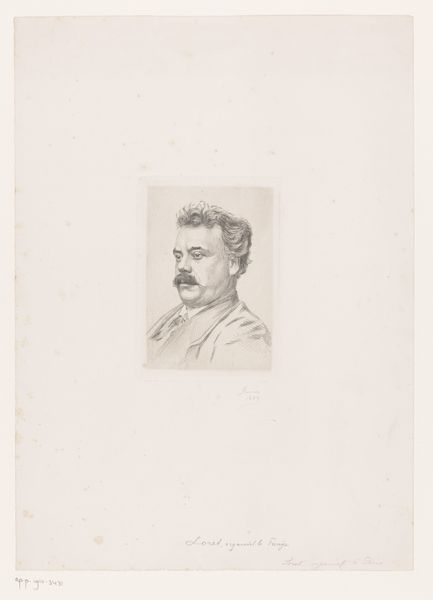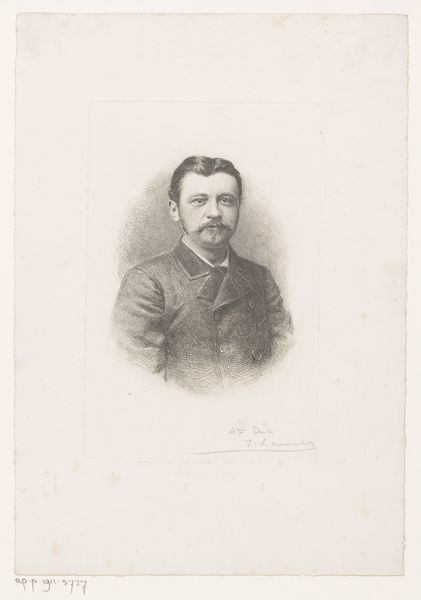
drawing, pencil
#
portrait
#
pencil drawn
#
drawing
#
pencil sketch
#
figuration
#
form
#
pencil drawing
#
pencil
#
line
#
history-painting
#
academic-art
#
realism
Dimensions: height 175 mm, width 117 mm
Copyright: Rijks Museum: Open Domain
Curator: Here we have Frans Lauwers’ "Portret van een onbekende man," created sometime between 1864 and 1911. It’s a pencil drawing, characteristic of the academic art style prevalent during that period. Editor: It strikes me as remarkably restrained. The delicate pencil lines create a sense of almost fragile composure, despite the man’s rather assertive mustache. Curator: Absolutely. Consider the role of portraiture during this time. It was often commissioned by the burgeoning middle class to assert social status and project an image of respectability. Editor: The hatching is interesting; Lauwers uses closely spaced lines to define the forms and create tonal variations. It’s effective but very controlled; you can almost feel the artist methodically building up the image. Curator: Lauwers’ dedication to realism and precise linework aligned perfectly with the academic standards promoted by institutions like the Royal Academies, making him a sought-after portraitist for those aiming to reflect such ideals. Editor: Do you think the lack of identifying details—the “onbekende man” element—removes it from that context, giving it more universal appeal beyond its immediate social function? The formal elements alone become the subject. Curator: Perhaps, but the ambiguity also prompts curiosity. One starts to consider the politics of representation – who got their portraits done, who was considered important enough to memorialize. The "unknown man" serves as a quiet reminder of countless lives unrecorded. Editor: I concede the point, but those textural gradations achieved with only graphite are marvelous. There is sophistication there, and I think viewers ought to appreciate such nuance! Curator: It indeed prompts interesting historical reflection; I believe that's part of what good art should do. Editor: I agree entirely. Seeing these techniques gives an added richness that a photo cannot.
Comments
No comments
Be the first to comment and join the conversation on the ultimate creative platform.

